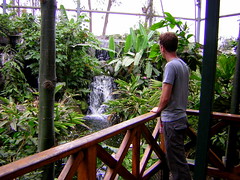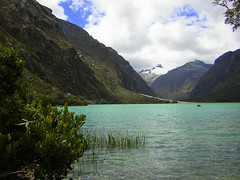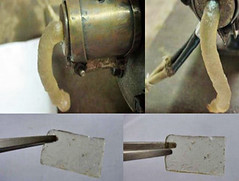Manuel: “I have a friend called ‘Don Pésimo’ who always says: ‘This is as bad as a mango ceviche’. And one day, to play with him, I made him a ceviche with mango!”
Category: "Lima City Guide"
Leguías Lima of the early 1900s
President and Dictator Augusto B. Leguía embarked on a mission to completely transform a capital city that had faded from the world scene. His achievements were remarkable and lasted decades, find out what they were…
The Cats of Parque Kennedy
The cats that live in the Parque Kennedy in the heart of Miraflores are at the centre of a conflict between animal lovers and some local residents.
MISTURA 2009 – II International Gastronomic Fair of Lima
As Peru becomes ever more associated with gastronomy, so too does the now-established gastronomic fair of Lima grow ever larger. This year, despite moving to a far larger venue in the centre of Lima, the second fair of its kind was enveloped by hundreds of thousands of attendees – with many ending up disappointed and unable to get hold of tickets.
What’s all the fuss about?
Bar Restaurante Rovira
A Peruvian “Huarique” in English might best be described as a “hidden nook where food is served”. In a country like Peru where people have little in the way of resources, small simple non-pretentious restaurants called huariques are the norm. The port city of Callao, where some of the region ’s best seafood is landed, also has some of the best huariques. Many are very old and are locally very well known. In this series, we’ll visit the greats.
Peru celebrates Independence Day with fountain of booze [Featured]
ITN News reports on the yearly tradition of the pisco fountain in the Plaza de Armas. It has long since become a popular part of the Fiestas Patrias celebrations. (Previous year’s)
Lima and Callao in Black and White
A collection of my photos of the city of Lima in black and white.
Cementerio Barquíjano
Walking along Av. Oscar R. Benavides, once called the Avenida Colonial that joined Callao with distant Lima, I happened upon this very pretty cemetery. It was Sunday and the large entrance was busy with families visiting lost relatives and flower sellers doing a brisk trade.
This public cemetery, built in 1859 is the final resting place of Chalacos (as the people from Callao are called) both rich and poor. The rich have built grand mausoleums while the poor suffice with a nook in a wall of tombs. Interestingly for such an old cemetery it is still in use, and it is a strange contrast to see much more modern mausoleums and graves alongside much older ones, or see old family plots more recently added to. It is also obvious, through the placing of fresh flowers and candles, whom among the dead are still remembered and mourned, and who have been forgotten.
Huarique Mateo
There isn’t a chalaco (as the natives of Callao are called) who has not eaten at Mateo, located in the historic center of Callao.
In Mateo, the specialities are first-rate fish and seafood.
Islas Palomino: Boat trip in Callao
Just off the coast of Callao, or more precisely, about 4km from the tip of La Punta, are two rocky uninhabited islands, which together with a few other rocky outcrops are called the Islas Palomino. The two major islands, one large and one small, are called San Lorenzo and El Frontón. Each have their own stories to tell.
Chucuito, Callao
Where old Callao ends and La Punta begins is Chucuito, a little barrio on the rocky beaches to the side of Peru’s, main port. Originally settled by Italian immigrants as recently as the late 1800s, it soon merged seamlessly into its increasing urban surroundings.
La Punta del Callao
Jutting out into the Pacific from the old port city of Callao is La Punta. Despite being attached to the noisy and bustling metropolis that is Lima and Callao, La Punta remains tranquil and pleasant, not unlike a small town in itself. Deeply connected to the sea and sea-faring, this is where private owners of yachts tie-up, where boating clubs reside and where the Peruvian Navy has its naval school. Home to Callao’s middle-class, its streets are attractive and tidy, lined with the mansions of the countries Republican period.





![Quinoa ‘risotto’ blends traditions of Peru, Italy [Featured]](http://imgs.sfgate.com/c/pictures/2009/04/15/fd-feast19_ph2_0500013145_part1.jpg)


![Drought fears: 35% loss of harvest & blackouts in Arequipa [Featured]](http://farm4.static.flickr.com/3228/2659249537_5c41340337_m.jpg)

